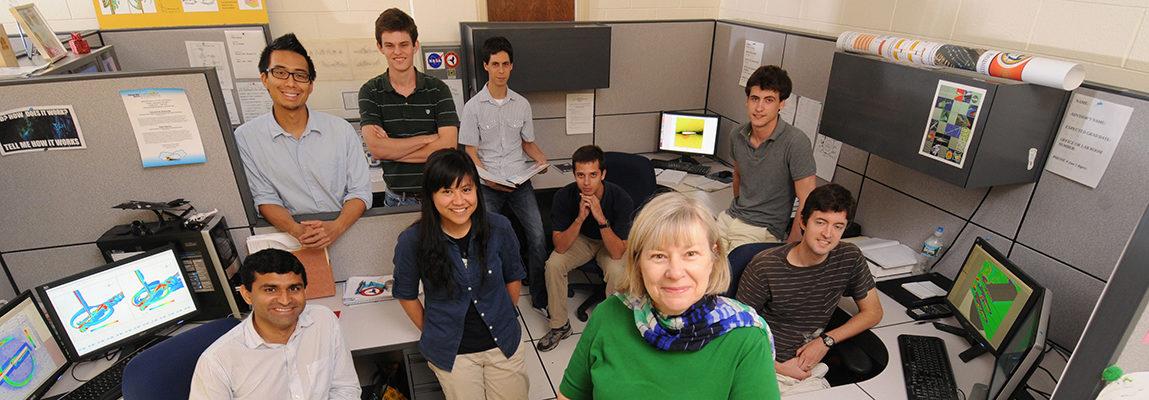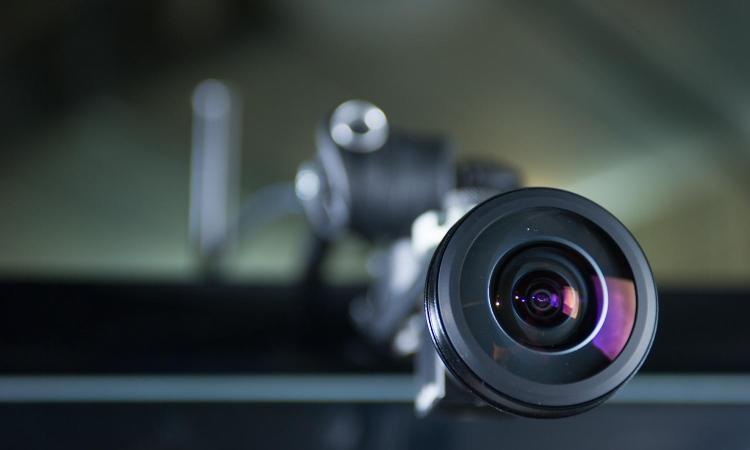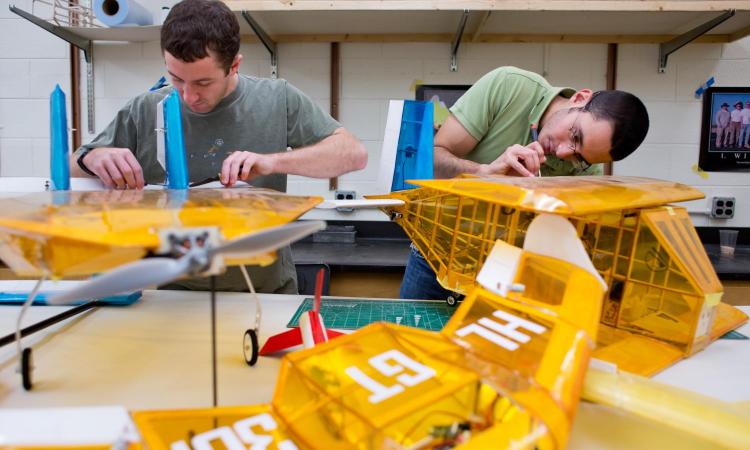Aeroelasticity & Structural Dynamics (ASD)


Focus
The Aeroelasticity & Structural Dynamics (ASD) group's research examines interactions among aerodynamics, structural mechanics, and dynamics, spanning the fields of fixed- and rotary-winged aircraft as well as spacecraft. It also focuses on interactions between structural mechanics and dynamics. Increasingly, it is integrating controls and optimization as well.
ASD researchers are developing computational methods for dynamics of systems of flexible structures that are interconnected. These are called multi-flexible-body dynamics. Focusing on rotary-winged aircraft aeroelasticity concerns, the ASD explores vibration reduction, improved methods for calculation of stability, methods for modeling composite rotor blades, and investigation of the effects of elastic coupling on blade performance and stability. Turning to fixed-wing aircraft, the group’s research focuses on computational methods, analytical and experimental studies of buffeting, and aeroservoelasticity of composite-winged aircraft with wings of high-aspect ratio. The group also employs high-order aerodynamics methods to capture the correct flow physics. This requires the marriage of computational fluid dynamics (CFD) and computational structural mechanics (CSM). Overall, the group’s work enables engineers to accurately and reliably predict the dynamics of complex flexible multi-body systems.
(text and background only visible when logged in)

Impact
The ASD’s work attracts the sponsorship of multiple partners, including NASA, the U.S. Air Force, the U.S. Army, and industry. The group tackles the unique deformation issues encountered by all high-performance aircraft: light-weight components are subject to vibrational and other forms of deformation. For instance, the structural deformation of wings can cause the quasi-static airloads to differ substantially from those of a more rigid vehicle. This includes a variety of unstable behaviors, both quasi-static and dynamic, which can shorten the life of the aircraft, or even destroy it.
The ASD group’s research seeks to address aeroelasticity and structural dynamics issues for aerospace systems early in the design process. In practice, this leads to fewer late-program “surprises” (such as flutter or vibration problems that show up on the prototype system) which delay production and add to the cost of new systems.
ASD researchers are developing computational methodologies which incorporate these aspects, and are utilizing this technology to explore the vitally important effects of structural flexibility and dynamics. Using ENS3DAE, a transonic tightly-coupled aeroelastic methodology developed as part of a consortium (Georgia Tech and Lockheed-Martin) through Wright Laboratory, researchers are exploring the mechanisms driving aeroelastic phenomena which lead to Limit Cycle Oscillations (LCO), flutter and fatigue problems. They have also developed a methodology, under Wright Laboratory funding, to couple existing rigid CFD codes and CSM codes to examine static aeroelastic problems. This methodology, Fluid and Structure Interface Toolkit (FASIT), can also be used to extend the usefulness of existing CFD codes, and as an interface mechanism between disciplines. Finally, flexible multi-body dynamics codes are coupled with OVERFLOW, a CFD code developed at NASA Ames Research center, to study rotorcraft aeroelasticity problems.
(text and background only visible when logged in)

Facilities
The work of the ASD is carried out in various lab facilities throughout the Guggenheim, Knight, Weber and ESM buildings. A strong relationship with the Aerospace Systems Design Lab (ASDL) allows our ASD faculty and students access to several collaborative spaces, such as the CoVE and the CoDE, located in thew Weber Building.
(text and background only visible when logged in)
Faculty
The AE faculty collaborating in the Aeroelasticity and Structural Dynamics (ASD) group are redefining the field. Find out more about their background, accomplishments, and vision.
Get the full picture by finding out about all of the AE labs, collaborative groups, and centers